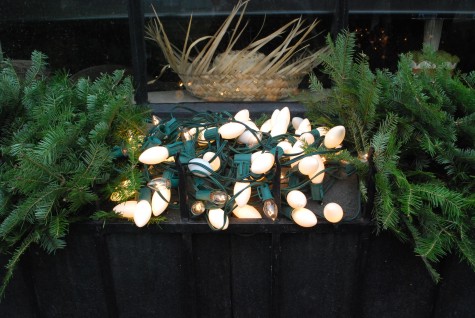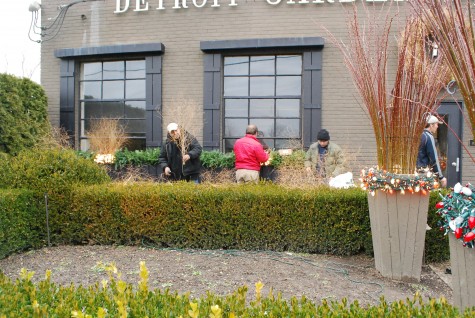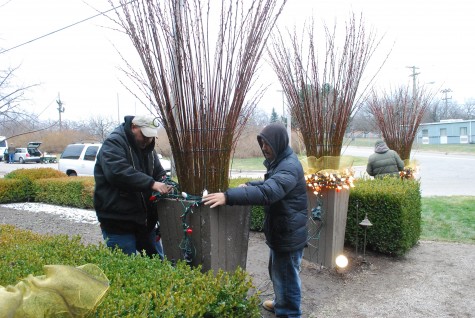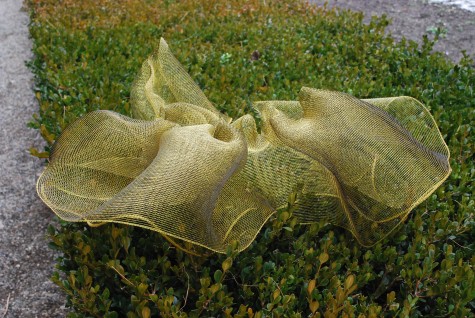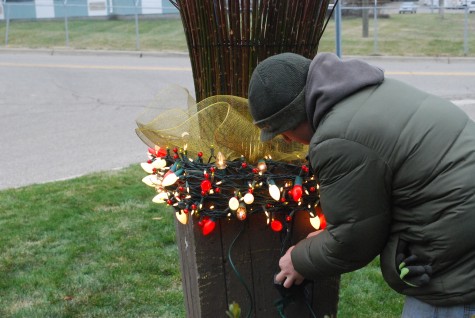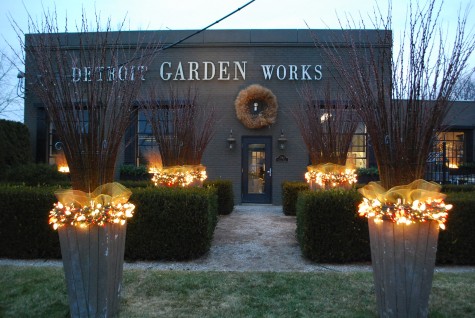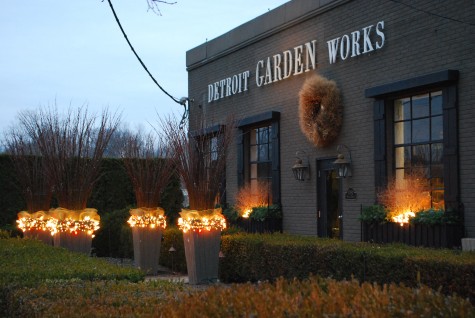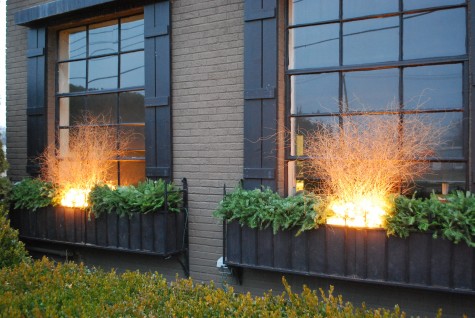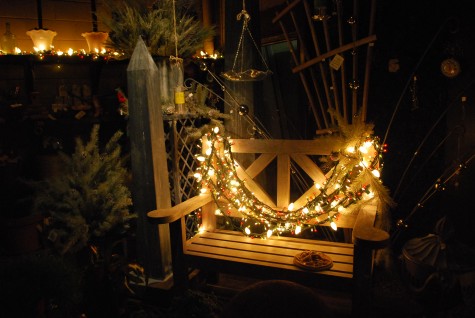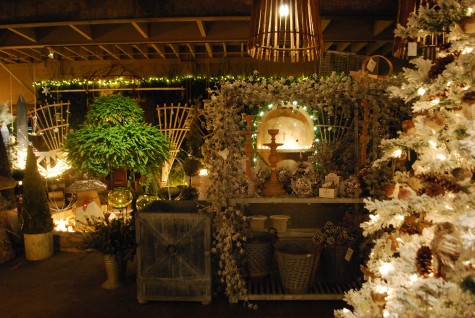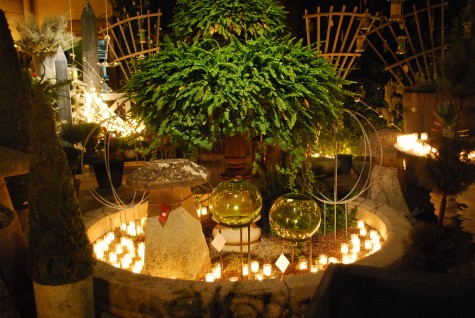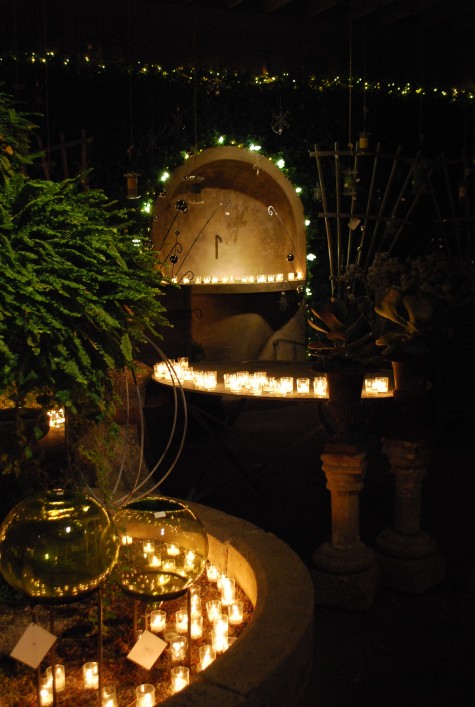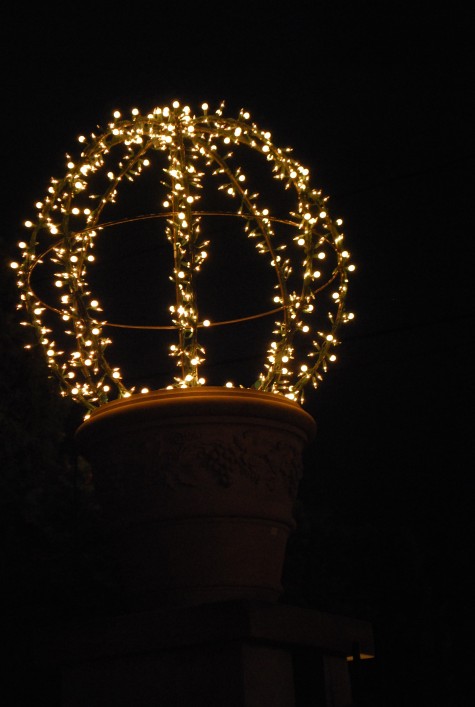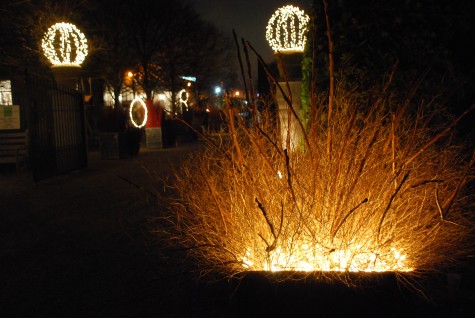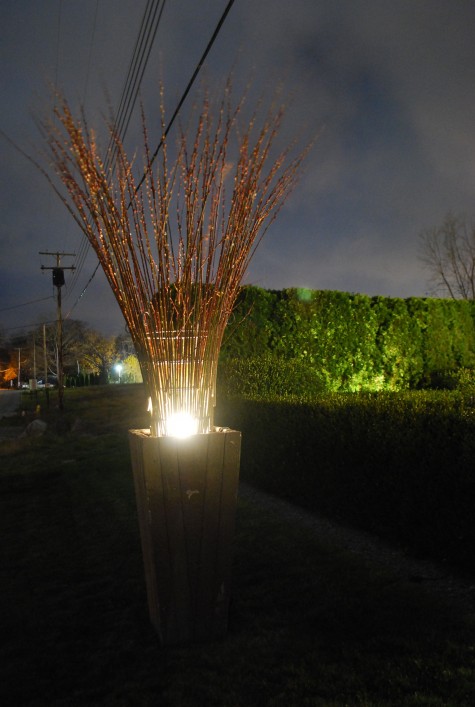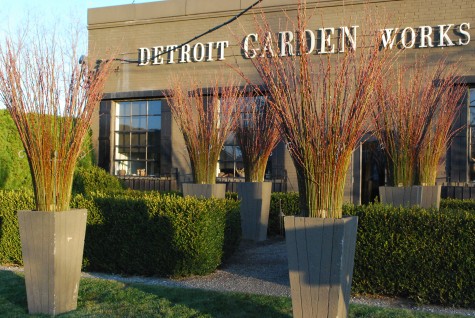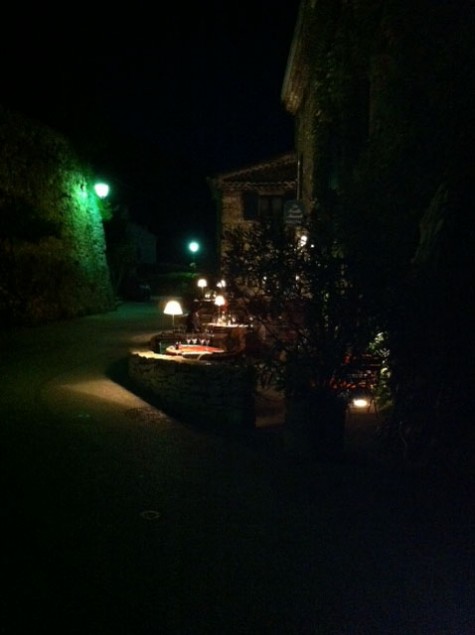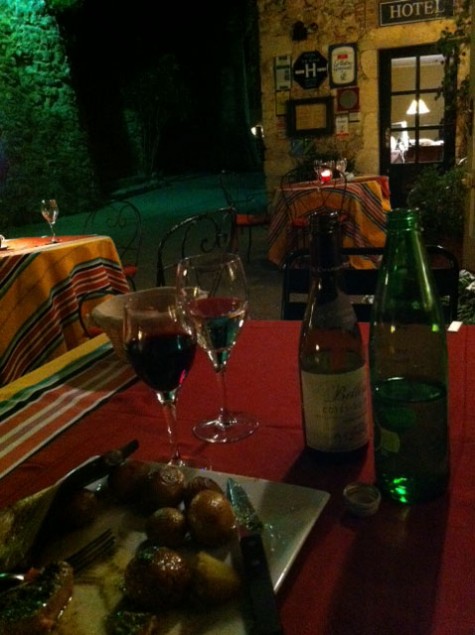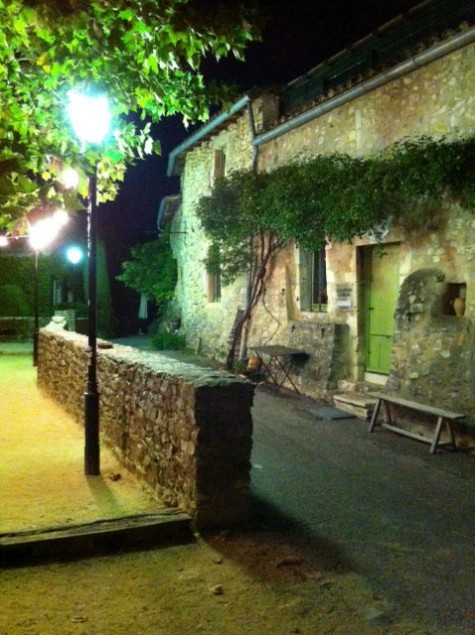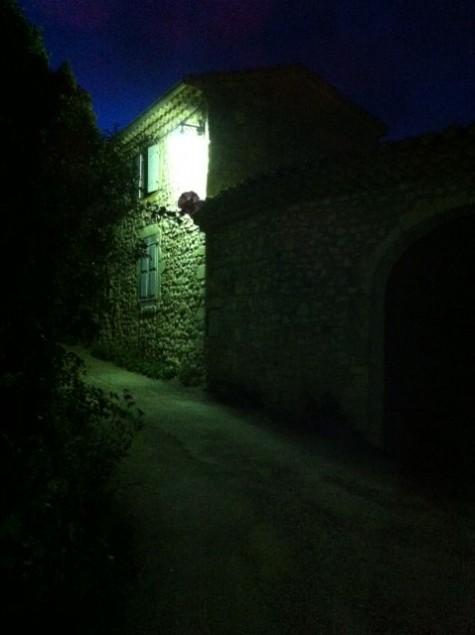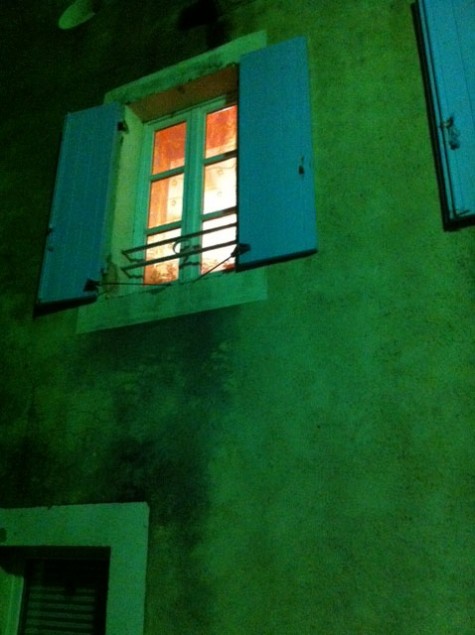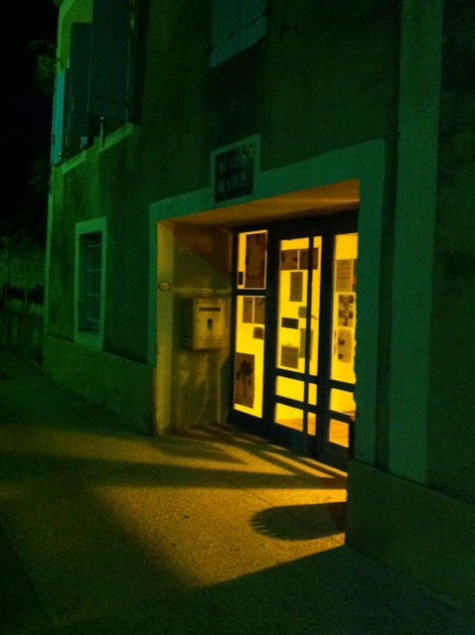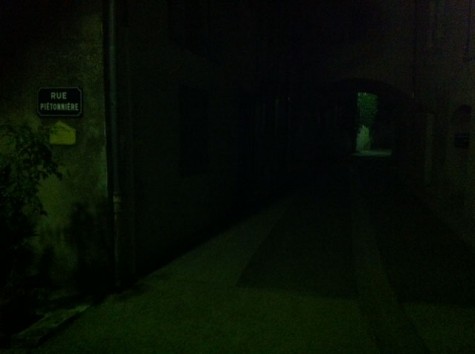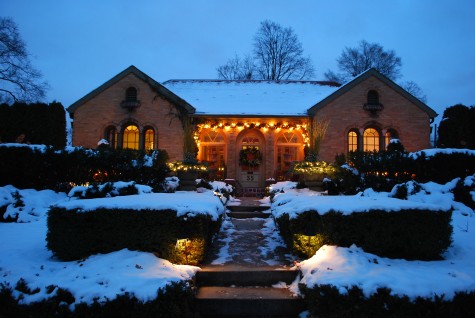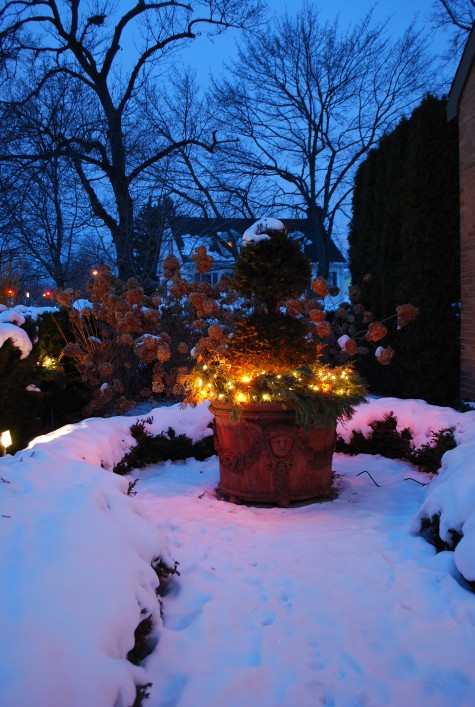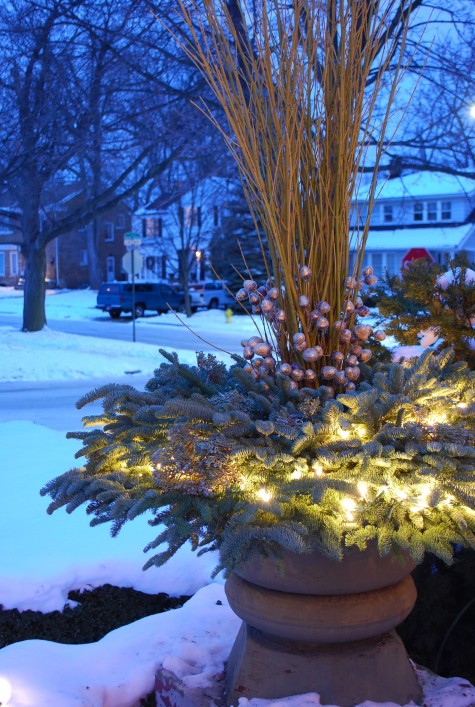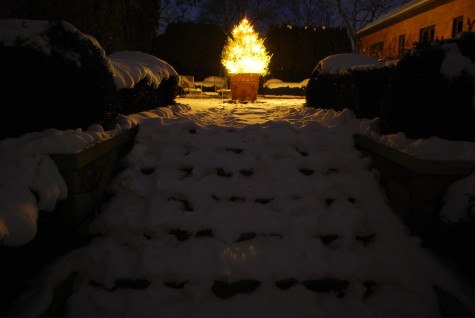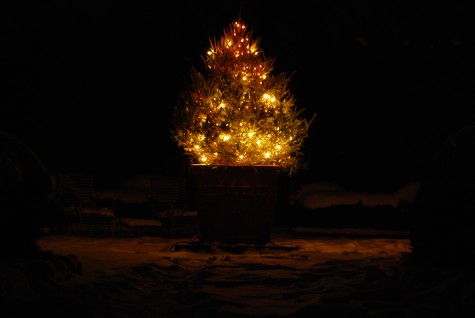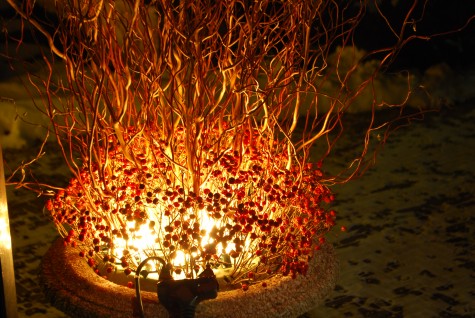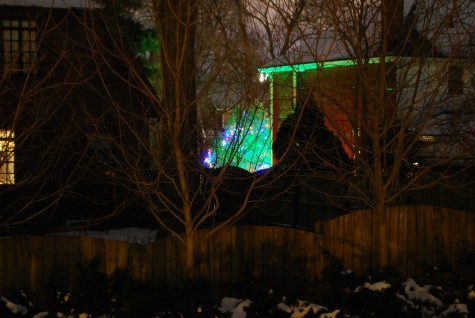Today was one of my most favorite days of the gardening year. I never know what day that will be-that is part of the excitement of the event. What event? My crews get most of the last of the landscaping work, and the winter and holiday pots finished. One moment later, they swarm the shop, intent on getting our holiday and winter display out front up and running. The 6 pots in front of the shop have had their centerpieces of pussy willow since before Thanksgiving. I have had lots of time to think over a plan for the holidays. Time has not particularly helped me this year-Icould not figure out what I wanted to do. But I knew I needed lights-and lots of them. So why not just get started with that?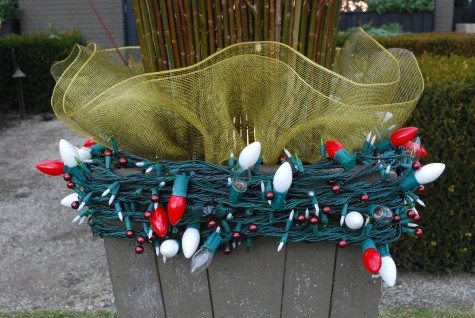
The winter is a tough season for any northern born and passionate gardener. How I might survive the months of the grey freeze is of great interest to me. I would much rather create a hospitable place where I can live, than wring my hands, and spread discontent. Each of my 6 pots got their own nest of lights. We twist and zip tie 4 or 5 strands of lights of different sizes, and colors. White, red and lime is this year’s scheme. This is not an entirely simple thing-we plan the spacing so each 45 foot garland has lights equally dispersed along its length. 
This giant wreath based on many stems of huck-I have owned it at least 8 years. Dusty,wobbly and in need of some some restoration work, I got it out of storage a few weeks ago; it would be perfect for this year’s field and weed holiday theme. I added many more twigs; I reglued every stem all around. Most of what existed from some 8 years ago was sound. The staying power of weeds is well known to every gardener. Rob is, and has been the driving force behind this year’s holiday. His trips into the fields to collect dead branches and weeds have made for a season with focus, purpose, and structure. This weedy wreath would be perfect.
A big part of the window box display in front of the shop-the dried remains of asparagus. The cultivation of asparagus-I have read lots about this. But only from Rob have I learned about the dry stems of asparagus-how their wiry skeletal branches might play a part in the winter season. The dead stems are amazingly persistent.
Once I get my act together on a plan, my crews make quick work of it. The window boxes got green, and had a bed of c-9 and c-7 lights installed in the center. Lucio was in charge of sticking the asparagus branches between the light string wires.
Bamboo stakes at the corners of the pots form an armature around which to wind the lights.
This gold and green sinamay does several things. It provides a soft transition between the geometrically placed willow stems, and the hard structure that is the light nest. The shimmery polyester threads will amplify the light coming from the garlands.
Multiple pots with lots of lights draws a lot of power; the shop has 2 20 amp circuits specifically installed for holiday lighting.
We have enough lights in the pots to create a daytime glow. Michigan is well known for its cloudy winter days-this day is no exception.
Dusk arrives 4:30 in the afternoon this time of year; we have an answer to that.
If you have not put lights outside for the holiday and winter yet, one light garland draped in the branches of the tree will do you, and your neighbors, a world of good.
Some holiday lighting asks for a well placed spotlight. Lots of lights can throw unlighted decor deep into shadow. Our wreath would not be visible at night, save for a pair of spotlights.
The window boxes now provide warm companionship to Rob’s pot o fire at the end of the driveway. Only one more detail remains to be done-can you spot what or where it will be it is?
Do try this at home. It will warm you up.
